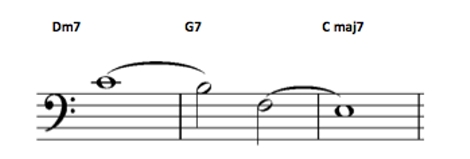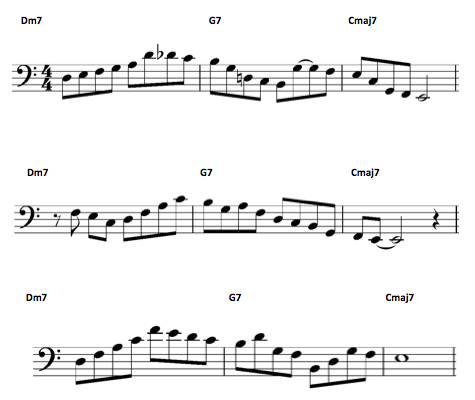As a professional musician, the goal of developing and building upon your groove and solo vocabulary should be a life long endeavor. Both aspects of playing the instrument require your equal, undivided attention. If your soloing skills are more developed than your groove playing, the musicians you work with will be sure to let you know one way or the other. If you do not provide solid, supportive basslines and take great pleasure in the repetitive nature of groove playing, then there is a chance you are likely to lose gigs. Try to balance out your practice schedule and make sure that you’re giving equal attention to all the musical requirements you have as a bassist.
While we’re on the topic of melodic phrasing, I’d like to focus this lesson on the concept of “Guide Tones.” Guide Tones are the important notes that define the sound of a chord. They usually consist of the 3rd and 7th degrees of a chord. When used correctly, they outline the flavor of the chords you’re improvising over and provide a framework for your melodic ideas.
The example below displays the guide tones of a two, five, one progression.

Instead of simply playing scales that function over the chords, guide tones will provide the scaffolding or framework to create lines that resolve to each other and truly outline the harmony. Below are examples of arpeggios and scales that are connected by guide tones which resolve from the seventh degree of the preceding chord to the third of the chord or vice versa.

Experiment with as many variations as you can come up with using arpeggios and scale patterns that connect the chords together with guide tones. Transpose the ideas in all twelve keys and have fun! Good luck!
Bassist James Rosocha is an educator, composer, and touring musician.
He can be heard on the last nine albums by jazz fusion guitarist B.D. Lenz or on his debut CD “Avalon.”